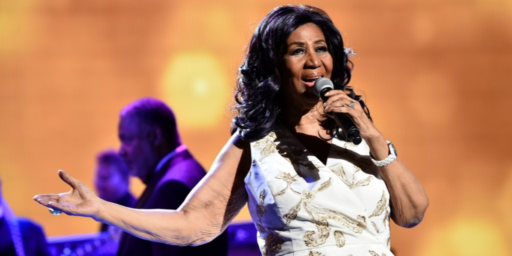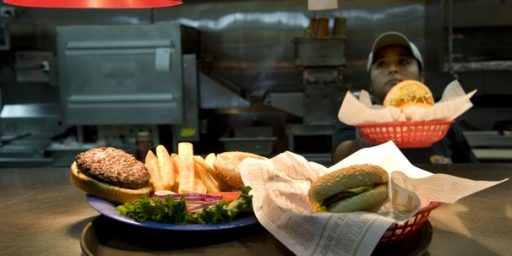Brooks’ Boo-Boos
Sasha Issenberg has an interesting piece in the current issue of Philadelphia magazine purporting to debunk several highly-regarded articles by David Brooks, notably his classic 2001 Atlantic Monthly, piece “One Nation, Slightly Divisible.” Issenberg contends that, not only does Brooks overgeneralize, he is often simply wrong factually. While the former is no doubt true and the latter may well be the case, the examples adduced don’t prove it to be so.
One major analytical flaw here is falling prey to the ecological fallacy. Issenberg continually uses state level data to “test” assertions Brooks makes about population centers. For example,
“We in the coastal metro Blue areas read more books,” Brooks asserted. A 2003 University of Wisconsin-Whitewater study of America’s most literate cities doesn’t necessarily agree. Among the study’s criteria was the presence of bookstores and libraries; 20 of the 30 most literate cities were in Red states.
What’s true of rural Pennsylvania isn’t necessarily true of the state at large, a rather obvious point that seems to escape Issenberg. And, of course, the number of libraries and bookstores really doesn’t tell us much about who is reading, let alone what.
And I’m not sure what this is supposed to prove:
“In Montgomery County we have Saks Fifth Avenue, Cartier, Anthropologie, Brooks Brothers. In Franklin County they have Dollar General and Value City, along with a plethora of secondhand stores,” Brooks wrote. In fact, while Franklin has 14 stores with the word “dollar” in their name — plus one Value City — Montgomery County, Maryland, has 34, including one that’s within walking distance of an Anthropologie in Rockville.
But I’m guessing no Saks Fifth Avenue, Cartier, Anthropologie, or Brooks Brothers? And what are these stores with “dollar” in their name? Are they Dollar Generals? And sheer number isn’t very useful, anyway. What’s the relative concentration compared to population and land mass? Percentage of retail economies?
This was interesting, as it is one of the examples from the article that always stuck with me:
As I made my journey, it became increasingly hard to believe that Brooks ever left his home. “On my journeys to Franklin County, I set a goal: I was going to spend $20 on a restaurant meal. But although I ordered the most expensive thing on the menu — steak au jus, ?slippery beef pot pie,’ or whatever — I always failed. I began asking people to direct me to the most expensive places in town. They would send me to Red Lobster or Applebee’s,” he wrote. “I’d scan the menu and realize that I’d been beaten once again. I went through great vats of chipped beef and ?seafood delight’ trying to drop $20. I waded through enough surf-and-turfs and enough creamed corn to last a lifetime. I could not do it.”
Taking Brooks’s cue, I lunched at the Chambersburg Red Lobster and quickly realized that he could not have waded through much surf-and-turf at all. The “Steak and Lobster” combination with grilled center-cut New York strip is the most expensive thing on the menu. It costs $28.75. “Most of our checks are over $20,” said Becka, my waitress. “There are a lot of ways to spend over $20.”
Notwithstanding that Brooks’ piece is three years old and that prices have gone up, this is interesting. Having lived all over red country, I can certainly attest that $20 for a restaurant meal in indeed inordinately expensive whereas people here in blue country think nothing of $35 entries with sides and drinks extra. Still, there are several menu items over $20 on the menu of the Chambersburg, PA Red Lobster. And, yes, Chambersburg is in Franklin County.
Kevin Drum finds himself in the unusual position of defending Brooks. He makes some really good points from a marketing survey perspective and even has a test for you.





That Blue Stater pay retail?
Well, that’s Brooks’ point, sort of. I was referring to Issenberg’s rebuttal.
I tend to buy clothing and whatnot on sale, at outlet malls, and the like. Still, it’s not like one is going to get the same quality merchandise at Dollar General as at Cartier.
—